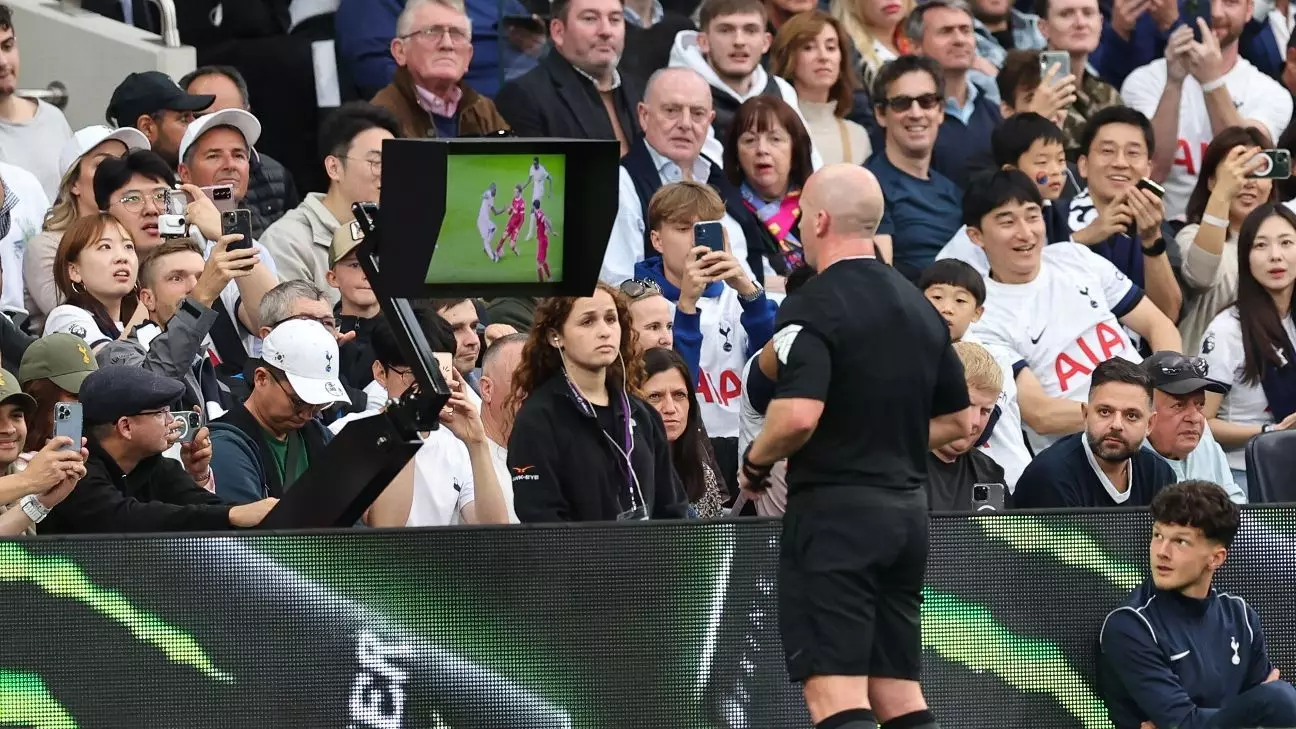In an attempt to enhance communication with fans, chief refereeing officer Howard Webb has proposed a new approach where Premier League referees would announce to the stadium crowds and TV audiences the reasons for changing their decisions after visiting the VAR monitor. This change is aimed at improving transparency and understanding of the VAR process among supporters. The idea is that by providing explanations for decisions that have been overturned, fans will have a better grasp of the rationale behind the referee’s actions.
The International Football Association Board (IFAB) initiated a successful 12-month trial of VAR in various international tournaments, including the Women’s World Cup. Following the positive outcomes, the IFAB incorporated VAR into the Laws of the Game, giving leagues the option to implement this change. Several leagues, such as Liga MX, MLS, and the Australian A League, have already introduced this policy. However, despite the initial skepticism during the Women’s World Cup, adjustments were made to improve the process by starting with the explanation and then announcing the final decision.
Despite the efforts to improve the VAR system, there have been instances of errors and controversies, such as the case of Nottingham Forest’s defeat at Everton where a clear penalty was not awarded. This incident highlights the challenges of VAR in ensuring accurate decisions and maintaining the integrity of the game. The need for consistency and accountability in VAR judgments is crucial to prevent such controversies from affecting the outcomes of matches.
Another significant development in football officiating is the introduction of semiautomated offside technology (SAOT) in the Premier League. This new technology aims to reduce the waiting time for VAR decisions and enhance the accuracy of offside calls. By eliminating the margin of error associated with human judgment, SAOT is expected to provide more precise and efficient offside decisions. However, there are concerns about the potential impact of SAOT on marginal offsides and the need for thorough testing to ensure its effectiveness across all stadiums.
While the implementation of VAR and SAOT in football has brought advancements in decision-making and officiating, there are still challenges and areas for improvement. Ensuring consistency, transparency, and accuracy in VAR decisions remains a priority for football governing bodies and officials. The integration of new technologies should be accompanied by comprehensive testing and evaluation to address any issues and enhance the overall effectiveness of the systems. As the use of VAR continues to evolve in football, the focus should be on optimizing these technologies to benefit the game and ensure fair play for all stakeholders.
